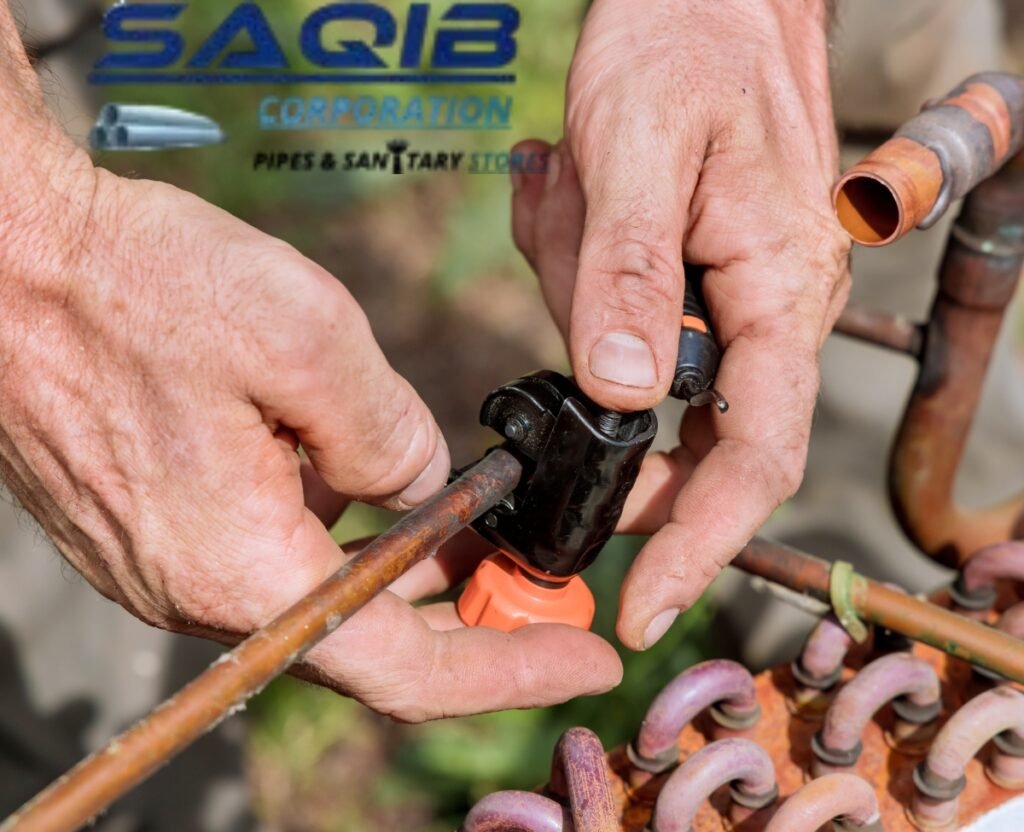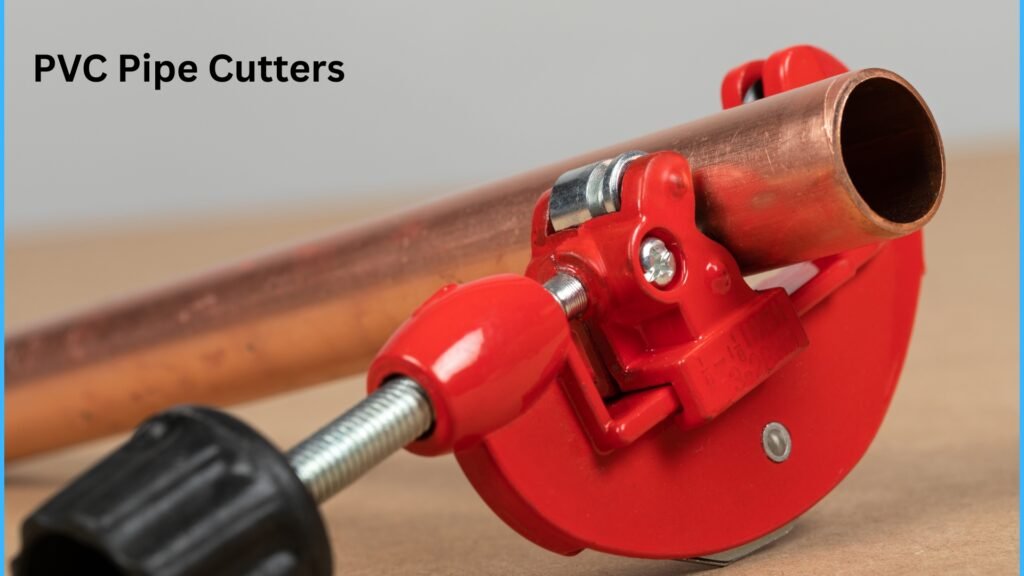PVC pipe cutters are widely used in plumbing, construction, and DIY tasks, where accuracy and efficiency are critical. By ensuring smooth, even edges, these cutters help improve the fit and durability of pipe connections, making them indispensable for achieving professional-grade results.
Research and studies highlight the effectiveness of PVC pipe cutters in producing clean, precise cuts, which significantly reduces waste and enhances project quality. Analysts emphasize the safety features of these devices, such as ergonomic designs and secure grips, which reduce the risk of accidents during use. Additionally, experts have noted that these tools streamline workflows by minimizing time and effort, especially in repetitive tasks. Their versatility also enables use across various pipe materials and sizes, ensuring adaptability for projects of all scales. These insights highlight the critical role PVC pipe cutters play in delivering professional and reliable results.
Choosing the right PVC pipe cutter can transform how you handle projects. Clean, precise cuts ensure strong, reliable pipe connections, leaving no room for leaks or misalignment. The right tool saves hours of effort, letting you breeze through tasks with ease while reducing physical strain. Beyond efficiency, a well-designed cutter makes every cut safer, protecting your hands and ensuring smooth operation. Whether you’re a DIY enthusiast or a professional, investing in the perfect cutter guarantees remarkable results every time. This guide breaks down everything about PVC pipe cutters, from their types to expert tips on using them effectively.
Types of PVC Pipe Cutters
PVC pipe cutters come in several designs tailored to suit different needs and pipe sizes. These tools cater to professionals and hobbyists alike.
1. Ratcheting PVC Pipe Cutters
Ratcheting cutters are a popular choice among professionals. These tools use a ratcheting mechanism, which allows users to incrementally apply force to cut through pipes. This design minimizes hand fatigue and provides a clean, straight cut. Most ratcheting cutters can handle pipes ranging from 1/2 inch to 2 inches in diameter.
- Advantages: Great for thick-walled pipes, ergonomic, reduces strain with repetitive usage.
- Best for: Cutting PVC, CPVC, and other rigid plastic pipes.
2. Spring-Loaded PVC Pipe Cutters
Spring-loaded pipe cutters resemble large scissors. They are simple, manual tools ideal for lightweight jobs. The spring mechanism allows the handles to easily return to their open position after each cut. While they are effective for small pipes, using these cutters on larger or thicker pipes can be difficult.
- Advantages: Portable, lightweight, cost-effective.
- Best for: Thin PVC pipes and small-scale projects.
3. Electric PVC Pipe Cutters
Electric cutters offer unmatched efficiency and speed. Powered by batteries or electricity, these tools are designed for heavy-duty projects. Commonly used in industrial settings, electric cutters ensure precision with minimal effort.
- Advantages: Fast, effortless operation, suitable for large-scale tasks.
- Best for: Cutting numerous pipes quickly, especially in professional or industrial environments.
4. Handsaws
Handsaws are versatile tools that work well with PVC pipes, particularly those larger in diameter. While they lack the precision of other cutters, they are useful for irregular or tight spaces where other cutters might not fit.
- Advantages: Affordable, versatile.
- Best for: Pipes with unconventional shapes or sizes.
5. Cable Saws
Cable saws feature a flexible, wire-based blade that can cut through PVC pipes in hard-to-reach areas. This tool is especially useful for plumbing beneath sinks or in tight spaces.
- Advantages: Highly adaptable, affordable.
- Best for: Cutting pipes in areas with poor accessibility.

Comparative Overview
| Type | Precision | Ease of Use | Best for |
| Ratcheting Cutter | High | Moderate | Thick-walled pipes |
| Spring-Loaded | Moderate | High | Small, thin pipes |
| Electric Cutter | Very High | Very High | Large projects needing automation |
| Handsaw | Low | Low | Large or irregularly shaped pipes |
| Cable Saw | Moderate | Moderate | Tight, inaccessible areas |
For more tips on selecting the best type of cutter for your needs, visit this guide.
Benefits of PVC Pipe Cutters
Here are the top benefits of using PVC pipe cutters:
Cleaner Cuts
Precision becomes especially important for professional plumbing systems to avoid leaks.
Time Efficiency
Tools like ratcheting or electric cutters significantly reduce time when dealing with multiple cuts or thicker pipes. Fast and accurate cuts streamline the overall project.
Reduced Effort
Manual tools, particularly those with ratcheting mechanisms, are designed to minimize physical strain. This makes it easier to handle repetitive tasks without discomfort. Electric cutters further enhance ease by automating the cutting process.
Versatility
With the range of available designs, PVC pipe cutters can tackle various materials, from standard PVC to reinforced and flexible piping. This versatility improves cost-efficiency by limiting the need to purchase multiple tools.
Safety
Using tools tailored to PVC ensures safety by reducing the risks of accidental injuries. Equipped with ergonomic handles or safety locks, these cutters prioritize user safety.
Safety and Best Practices for Using PVC Pipe Cutters
Proper handling of PVC pipe cutters not only ensures better results but also prevents accidents. Follow these essential safety practices to maximize effectiveness:
Wear Protective Gear
Safety goggles are equally important to shield your eyes from debris or fragments during cutting.
Stabilize the Pipe
A stable pipe leads to smoother, cleaner cuts and prevents potential injuries caused by movement.
Choose the Right Cutter
For instance, use a handsaw for oversized pipes or a ratcheting cutter for smaller, more rigid pipes.
Inspect the Blade
Dull blades may lead to uneven cuts, excess strain, or even accidents.
Use Lubricants
Especially for manual or spring-loaded cutters, applying a spray lubricant or even household cooking oil reduces resistance and ensures smoother cuts.
Consider Weather Conditions
PVC becomes brittle in cold temperatures. Before cutting, immerse the pipe in lukewarm water to prevent cracks or accidental shattering.
Avoid Excessive Force
Allow the blade to do the work, particularly when using tools like ratcheting cutters.
Common Mistakes to Avoid
Awareness of these errors ensures you make clean, precise cuts every time.
Skipping Measurements
Cutting pipes without marking the desired length leads to improperly sized pieces. Measure and mark every segment before cutting.
Overlooking Burrs
Neglecting to smooth edges after cutting can create a poor pipe fit.
Using Incorrect Tools
Overloading a hand tool or using a handsaw for small pipes results in jagged cuts.
Why the Right Tool Matters
Selecting a clean cut eliminates leaks and misalignment, ensuring long-term durability. For larger projects, investing in an ergonomic and durable tool saves time and reduces cumulative fatigue. The proper cutter also bolsters safety, preventing unnecessary risks.
Conclusion
PVC pipe cutters may seem like a small component in a toolbox, yet their impact is profound. A well-chosen cutter bridges the gap between amateur results and professional-grade work. The clean cuts they create not only improve the structure’s reliability but also save time and effort. By prioritizing quality tools combined with safe practices, even the simplest tasks become smoother and safer.
Your projects deserve precise results. Invest in the right PVC pipe cutter and experience the satisfaction of seamless fitting and efficient operation. A modest tool, but one with undeniable value in every cut.

